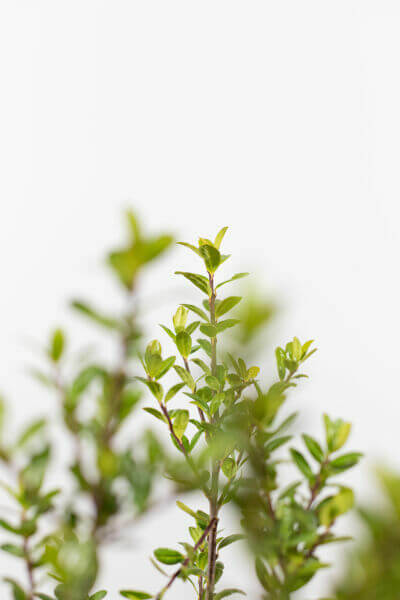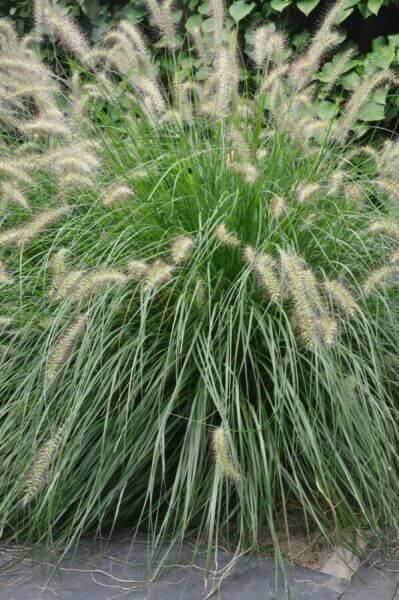Hedging Plants For Butterfly Gardens
Boost your garden's attraction with lavish hedge ranges such as Yew (Taxus), Thuja, Laurel, Photinia, and Bamboo, commemorated for their structural integrity and environmental benefits.
Yew and Thuja offer evergreen protection and winter durability, while Laurel offers quick growth and broad, aromatic leaves.
Photinia adds seasonal appeal with its lively red foliage, and Bamboo provides a low-maintenance, serene ambiance.
These hedges enhance air quality, decrease noise, and develop tranquil, private areas.
Appropriate planting, spacing, and maintenance guarantee energetic growth and environmental consistency.
Explore how these lush ranges can elevate your garden's appeal and well-being.
Secret Takeaways
Transform Your Garden With Lush Hedge Ranges
- Select Yew for its thick, evergreen growth and unparalleled durability.
- Go with Laurel for its fast growth and broad leaves, ensuring quick personal privacy.
- Pick Photinia for its dynamic seasonal foliage, which turns a striking dark red.
- Use Bamboo for a low-maintenance, winter-hardy hedge with aesthetic appeal.
- Area plants 2-3 per meter and prune routinely for optimal development and health.
Popular Hedge Plants
When changing a garden with rich hedge varieties, it's important to consider popular hedge plants such as Yew, Thuja, Laurel, and Photinia due to their distinct attributes and benefits.
Yew (Taxus) is highly respected for its durability and thick, green development, making it a prime option for sustaining landscapes.
Thuja is kept in mind for its evergreen foliage and robust winter season strength.
Photinia includes seasonal vibrancy with red leaves that darken with time, creating vibrant visual appeal.
Laurel uses quick development and fragrant, broad leaves, ideal for fast personal privacy.
In Addition, Bamboo is an excellent choice for atmosphere, providing a low-maintenance, winter-hardy choice that improves the garden's aesthetic with its classy, swaying walking canes.
These choices accommodate a variety of horticultural needs and choices.
Advantages of Garden Hedges
Garden hedges offer a wide variety of benefits, making them a valuable addition to any landscape. These natural barriers are cost-effective to implement and provide significant wind security, improving air circulation and contributing to sound reduction. The thick foliage of hedges like Thuja and Beech makes sure privacy by obstructing presence, producing a tranquil and secluded environment.
Hedges also play a crucial function in microclimate regulation, providing a steady environment that fosters plant development and minimizes temperature level fluctuations. Their detailed leaf structures filter contaminants, improving air quality and adding to a much healthier garden environment.
Furthermore, hedges master sound reduction, soaking up and deflecting sound waves to lower ambient noise levels. This double functionality of supplying both visual and acoustic personal privacy enhances the total tranquility and visual appeal of any garden.
Planting and Upkeep Tips
For a successful hedge, careful preparation of the planting area is essential. Make sure the soil has proper pH and drainage to support strong root advancement.
Area the plants appropriately for the picked species. Water the hedge regularly during its preliminary development phase, adjusting as required with seasonal changes.
Carry out a organized pest control and disease avoidance strategy, using natural or chemical treatments when essential. Frequently check for aphids, termites, and fungal infections.
Apply mulch to maintain wetness and reduce weeds. Seasonal pruning promotes thick growth and air flow, important for plant health.
Following these guidelines will help you cultivate a vibrant, well-kept hedge that improves the charm of your garden.
Spacing and Trimming Guidelines
Spacing and Cutting Standards
Correct spacing and cutting are important for cultivating healthy, visually appealing hedges. Adequate spacing makes sure each plant gets adequate nutrients, light, and airflow.
Follow these standards for optimum hedge maintenance:
- Spacing: Position hedge plants 2-3 plants per meter to motivate robust growth.
- Pruning Techniques: Regular pruning is necessary for maintaining preferred hedge height and shape. Cut brand-new development in summer and cut back older wood during winter season.
- Seasonal Care: Change cutting schedules and techniques according to seasonal requirements to ensure plant health.
- Hedge Height: Frequently display and cut to preserve the preferred hedge height and achieve consistent aesthetics.
Adhering to these actions will guarantee your hedge flourishes, enhancing both the appeal and performance of your garden.
Selecting the Right Hedge
Selecting the Right Hedge
Selecting the Browse around this site proper hedge includes evaluating factors such as fully grown height, foliage density, and environmental resilience. Effective hedge plant selection needs understanding each types' growth characteristics and site-specific flexibility.
For example, Yew (Taxus) uses outstanding longevity and thick growth, while Thuja is significant for its winter resilience. Furthermore, thinking about upkeep requirements is vital; fast-growing types like Laurel or Privet need routine cutting, whereas low-maintenance choices like Bamboo or Ivy may be more effective for those seeking very little maintenance.
Environmental factors such as soil type, light availability, and wetness conditions should likewise guide the selection procedure. This cautious technique ensures the picked hedges will thrive, offering both practical and aesthetic benefits to the garden landscape.
Delivery and Planting Advice
To ensure your hedge plants thrive, they need to be provided by specialized couriers and planted immediately upon arrival.
Follow these necessary actions for successful planting:
- Soil Preparation: Enhance the soil with organic matter to improve drain and nutrient material.
- Planting Depth: Produce a trench twice the width and equivalent to the depth of the root ball.
- Watering Strategies: Water thoroughly after planting, keeping the soil consistently wet however not filled.
- Mulching: Use a layer of mulch to retain moisture and suppress weeds.
Customer Support and Service
Given the essential role of timely assistance in horticultural pursuits, our consumer assistance team is available 6 days a week through telephone, email, and social media to use professional advice and promptly deal with any concerns. Their commitment to quick reaction times ensures consumer fulfillment by dealing with questions associated with plant health, optimal planting techniques, and maintenance schedules.

Within 24 hours
This detailed support group, strengthened by an outstanding 9.3/ 10 client rating, highlights our commitment to improving the gardening experience for every customer.
Often Asked Questions
The Length Of Time Does It Consider Hedge Plants to Develop?
Hedge plants usually need one to three years to end up being completely developed, with the precise period varying by types and growing conditions.
Reliable care throughout this crucial duration is vital for robust development. Consistent watering, alert weed control, and appropriate fertilizer application are essential in promoting strong root development.
For instance, fast-growing species like Laurel might develop quicker, while slower-growing ranges such as Yew may take longer. Persistent maintenance speeds up the facility procedure, resulting in healthy and thick hedges.
What Are the Finest Hedge Plants for Privacy?
The question of the finest hedge plants for personal privacy includes evaluating evergreen and deciduous choices.
Evergreen hedges like Thuja, Laurel, and Cypress supply year-round coverage, ensuring continuous personal privacy.
In contrast, deciduous hedges such as Beech offer seasonal privacy, shedding leaves in chillier months.
Key maintenance tips for privacy hedges consist of routine trimming, fertilizing in spring, and appropriate spacing-- normally 2 to 3 plants per meter.
In addition, constant watering and diligent weed removal are crucial for promoting healthy, dense growth.
Can Hedge Plants Attract Wildlife to My Garden?
Yes, hedge plants can attract wildlife to your garden by providing essential advantages like shelter, food, and nesting websites, therefore boosting regional biodiversity. Yew, holly, and laurel are outstanding for drawing in birds, while ivy supports a variety of insects.
However, it is necessary to keep in mind that there are some downsides, such as increased maintenance to manage pests and routine maintenance. Thoroughly choosing and maintaining hedge varieties can assist balance these downsides and benefits, ultimately cultivating a dynamic and sustainable community in your garden.
Are There Any Blooming Hedge Plants Available?
Yes, there are flowering hedge plants offered that can enhance the appeal of your garden.
For example, Elaeagnus, likewise understood as Olive Willow, produces fragrant white flowers in the fall, including a touch of elegance.
Photinia, another popular option, showcases vibrant red leaves that grow into a rich green, developing a dynamic visual effect throughout the seasons.
To guarantee these plants thrive, it's vital to practice appropriate pruning strategies and seasonal maintenance, such as cutting new development in the summertime and cutting back in the winter.
These procedures will help preserve the health and visual appeal of your flowering hedges.
How Do I Avoid Bugs in My Hedge Plants?
To prevent insects in hedge plants, utilize natural bug control methods and preserve correct hedge care. Introduce useful pests like ladybugs, which prey on hazardous bugs, to create a balanced community.
Frequently check your hedges for signs of infestation and without delay eliminate any afflicted parts to prevent the spread. Ensure the health of your hedges by using balanced fertilizers and providing sufficient water.
Use mulching to retain soil wetness and proper spacing to lower plant stress and promote robust development. These practices collectively assist in minimizing bug issues and preserving a healthy hedge.
Conclusion
In essence, choosing the best hedge varieties such as Yew, Thuja, and Laurel can change any garden into a peaceful haven. These plants supply year-round plant, improve aesthetic appeal, and offer useful advantages like noise reduction and wind defense.
Correct planting techniques, accurate spacing, consistent watering, and seasonal cutting are crucial for ideal growth.
Reputable delivery services and expert consumer support ensure a smooth experience from purchase to planting, making it simpler than ever to elevate your outside space.
Garden hedges use a wide variety of benefits, making them an important addition to any landscape. These natural barriers are affordable to carry out and offer substantial wind security, boosting air blood circulation and contributing to noise decrease. The dense foliage of hedges like Thuja and Beech guarantees privacy by blocking visibility, producing a remote and serene environment.

Pruning Strategies: Routine pruning is important for preserving desired hedge height and shape. Cut brand-new growth in summer season and cut back older wood throughout winter.